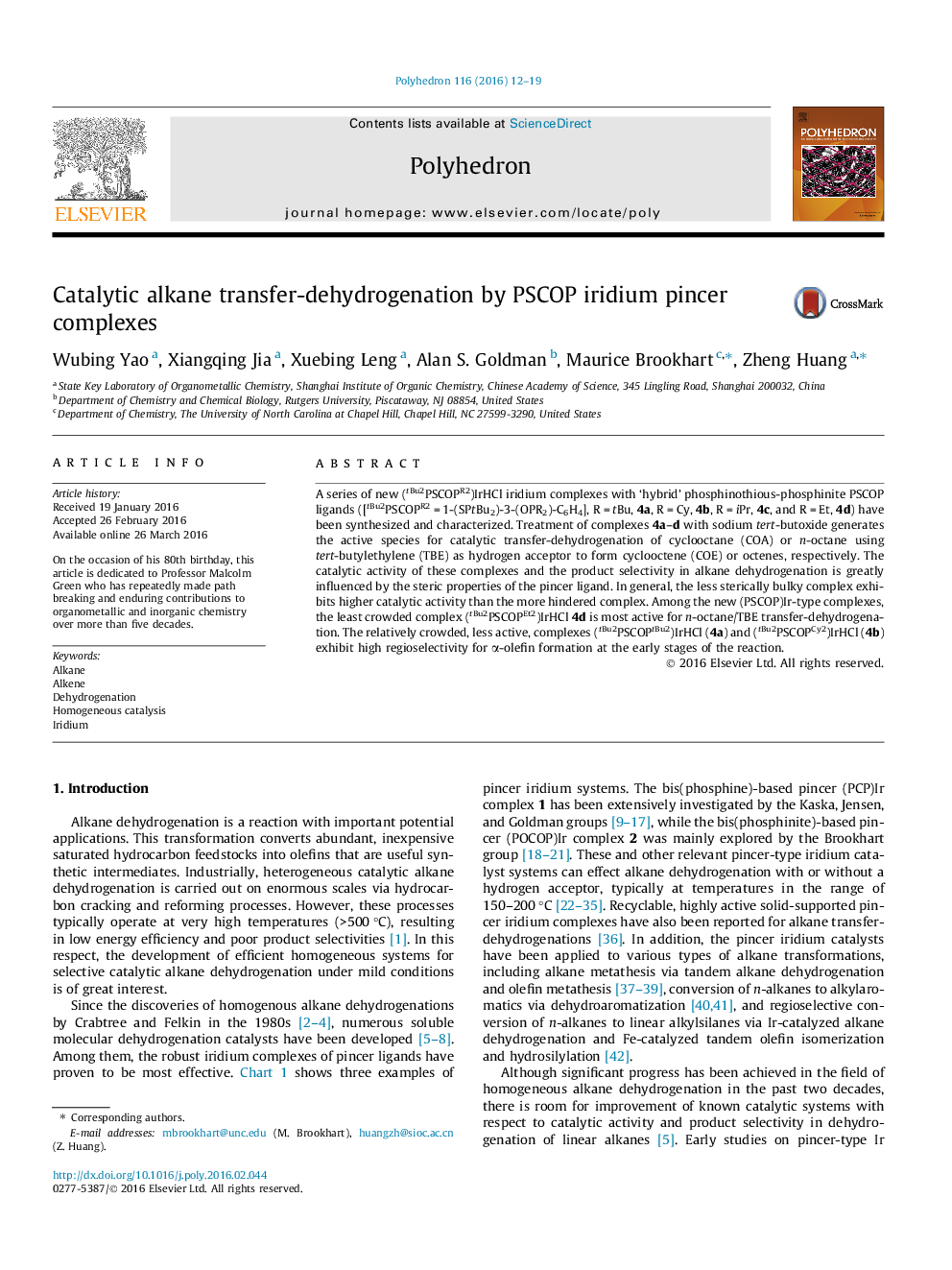| Article ID | Journal | Published Year | Pages | File Type |
|---|---|---|---|---|
| 1335003 | Polyhedron | 2016 | 8 Pages |
A series of new (tBu2PSCOPR2)IrHCl iridium complexes with ‘hybrid’ phosphinothious-phosphinite PSCOP ligands ([tBu2PSCOPR2 = 1-(SPtBu2)-3-(OPR2)-C6H4], R = tBu, 4a, R = Cy, 4b, R = iPr, 4c, and R = Et, 4d) have been synthesized and characterized. Treatment of complexes 4a–d with sodium tert-butoxide generates the active species for catalytic transfer-dehydrogenation of cyclooctane (COA) or n-octane using tert-butylethylene (TBE) as hydrogen acceptor to form cyclooctene (COE) or octenes, respectively. The catalytic activity of these complexes and the product selectivity in alkane dehydrogenation is greatly influenced by the steric properties of the pincer ligand. In general, the less sterically bulky complex exhibits higher catalytic activity than the more hindered complex. Among the new (PSCOP)Ir-type complexes, the least crowded complex (tBu2PSCOPEt2)IrHCl 4d is most active for n-octane/TBE transfer-dehydrogenation. The relatively crowded, less active, complexes (tBu2PSCOPtBu2)IrHCl (4a) and (tBu2PSCOPCy2)IrHCl (4b) exhibit high regioselectivity for α-olefin formation at the early stages of the reaction.
Graphical abstractNew (tBu2PSCOPR2)IrHCl iridium complexes ligated by hybrid phosphinothious-phosphinite PSCOP ligands have been synthesized and characterized. The steric properties of the pincer ligands prove to have a marked impact on catalytic activities of these complexes in transfer-dehydrogenation of cyclic and linear alkanes.Figure optionsDownload full-size imageDownload as PowerPoint slide
